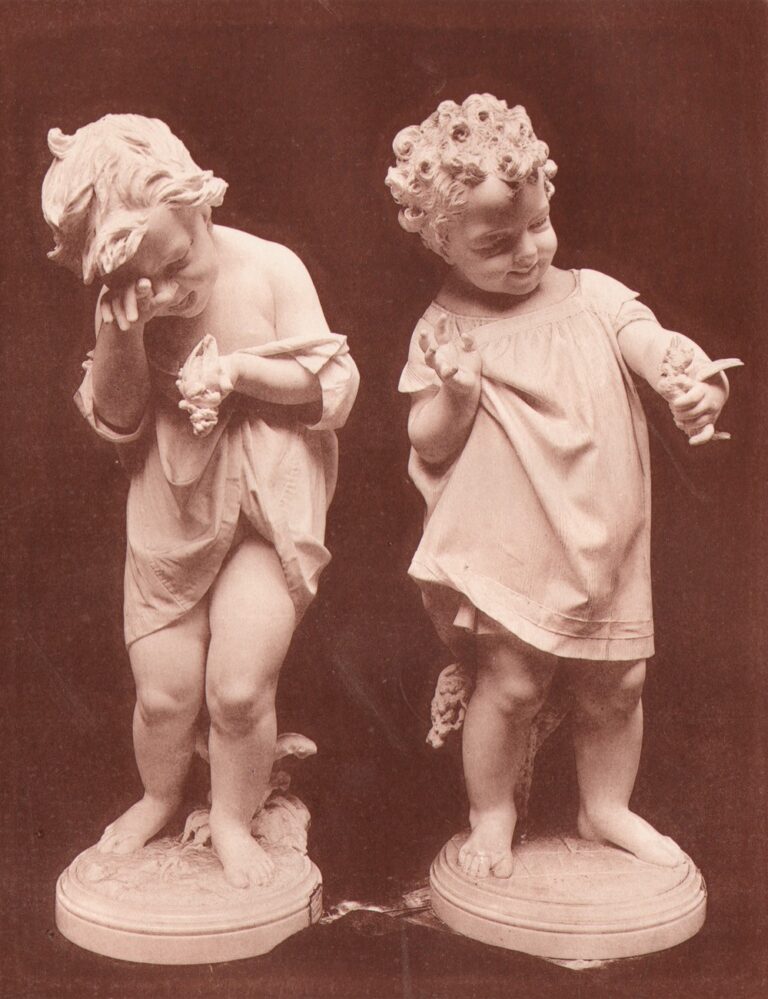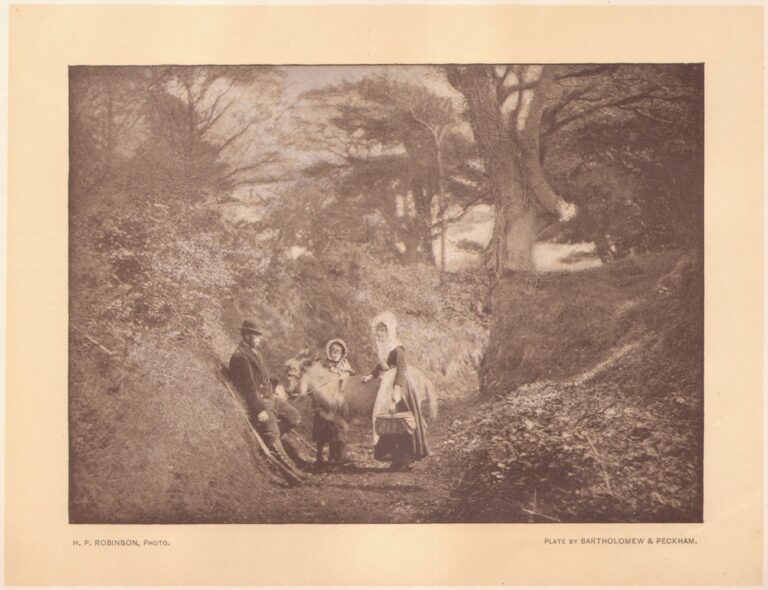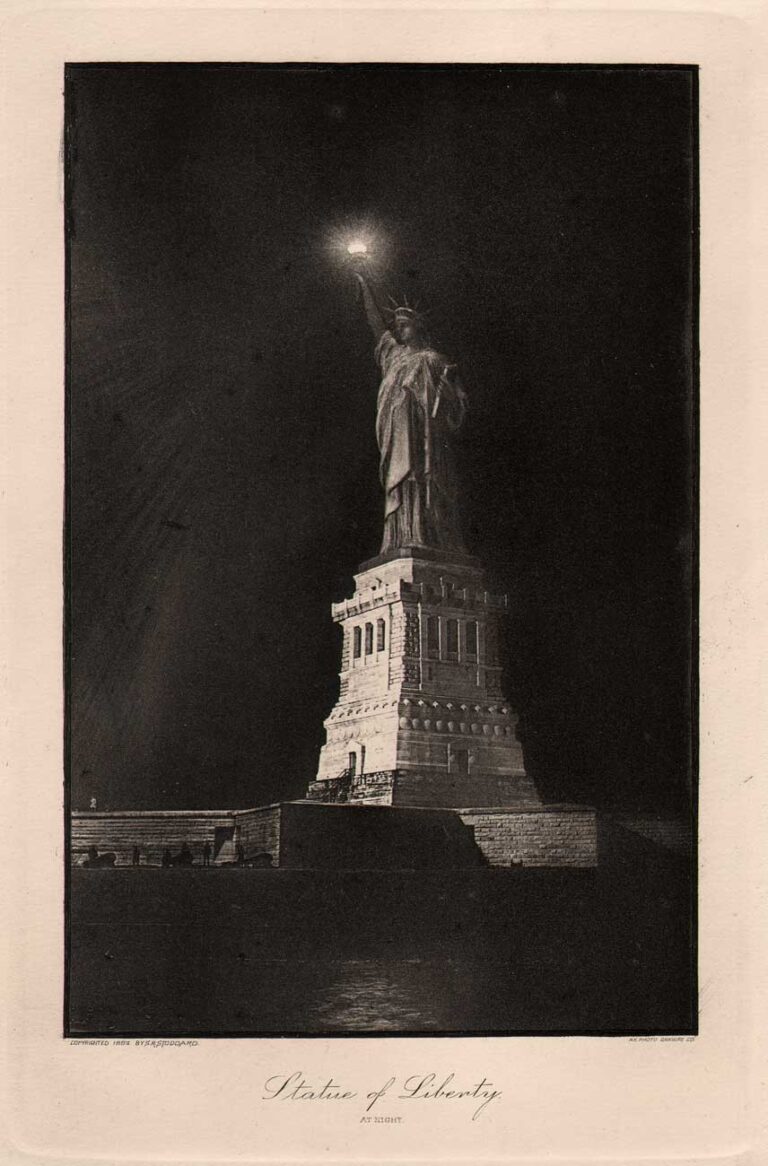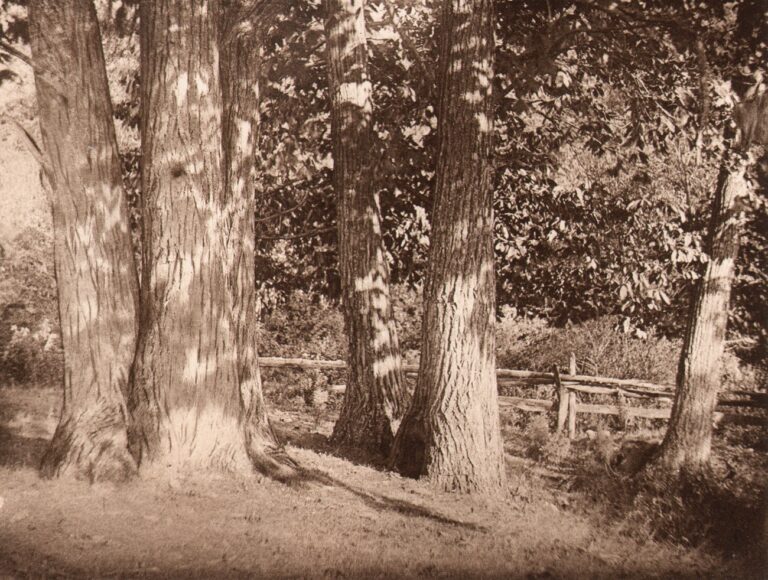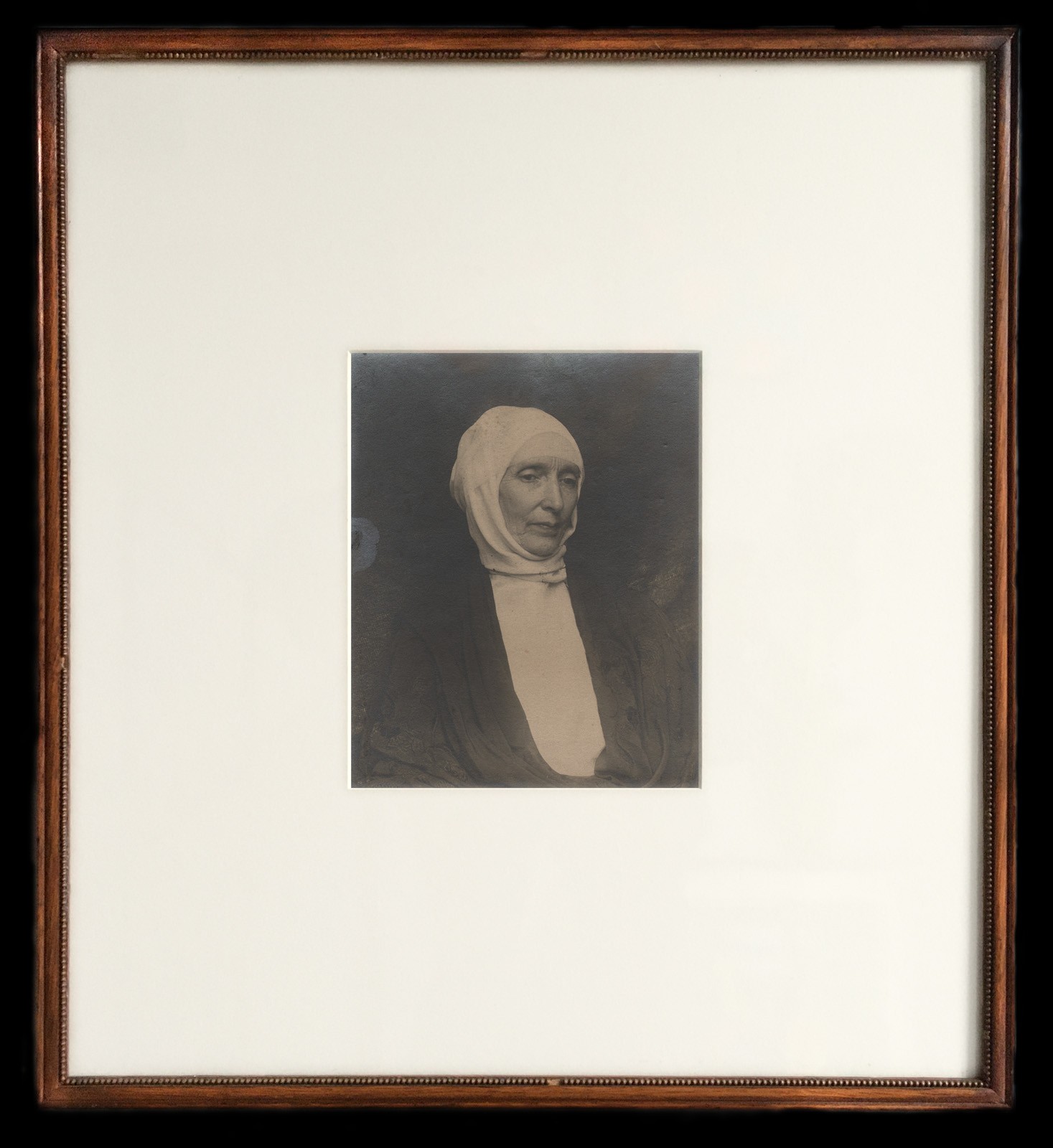
A Holbein Woman
Drawing inspiration from a Renaissance portrait of a young woman and photographed ca. 1890-2, A Holbein Woman was one of the earliest and most successful examples of portraiture done by the Deerfield, MA sisters Francis and Mary Allen. The subject is their mother, Mary Stebbins Allen. (1819-1903) In the 2002 volume The Allen Sisters Pictorial Photographers 1885-1920 by Suzanne L. Flynt, details emerge on background: American social reformer and activist Ellen Gates Starr (1859-1940) “took great satisfaction in costuming Frances and Mary’s mother, Mary Stebbins Allen, for A Holbein Woman (pl. 3). The composition departed from the Allens’ previous work ordinarily taken outdoors with even lighting and little evidence of staging. With the creation of A Holbein Woman and Sibyl (pl. 4), inspired by portraits by Renaissance painters Hans Holbein the Younger and the Elder (figs. 7,8), the Allen sisters took their first steps into art photography.” (⌘ 1.) (p. 25)
Most likely framed in April, 1896 due to the presence of a dated newspaper broadsheet page inserted behind the backing boards, this example of A Holbein Woman is presented here in its’ original Dunklee & Freeman wood frame with replacement rag mat. The presence of an original Allen sisters label with corresponding numbers and title of the work pasted onto the frame backing boards indicates it was additionally exhibited in an unknown salon during the mid to late 1890’s.
Exhibition History:
1896: Washington Salon and Art Photographic Exhibition of 1896 : held at the Assembly Hall of the Cosmos Club, May 26th-29th, 1896. (Washington, D.C.)
Class B
Misses F.S. and M.E. Allen
180. A Holbein Woman.
“The jury desires to express its commendation of the artistic merits of No. 180, ’The Holbein Woman,” which but for certain technical demerits, would have been decorated,”… Source: The American Amateur Photographer, June: p. 237.
1900: Third Philadelphia Photographic Salon
6. A Holbein Woman
Print notes recto: unconserved state: glue remnants to several areas of print margins and to original white acidic over-mat since replaced with museum rag mat similarly cut to original opening; slight area of “burning in” from verso of support above print where wood backing boards had come into contact; small closed tear and possible moisture intrusion to middle of left margin; some glue remnants to border areas of primary gray support; graphite marginalia (inverted) from unknown hand along lower margin of primary support: FS Allen and ME Allen; opposite margin: 1- 16 1/4 x 18 Gray Mat Board Frame
Print notes verso: lateral areas of “burning in” to upper and middle sections of gray primary support where wood backing boards had made long-term contact, since removed.
Frame notes verso: original brown backing paper with remnant of framing establishment: (mould)ings suitable for every style of …..and all the Natural Woods. (DUNK)LEE & FREEMAN, (C)hapman St., Greenfield, Mass.; underneath, (since removed with label preserved) the original wood backing board with pasted white-paper label (7.2 x 13.6 cm) with following: black ink photographers stamp: F.S. & M.E. Allen. Deerfield, Mass.; in black ink believed to be in the hand of the photographers: No 7 A Holbein Woman. and the number 73 in the upper right corner. Additionally, a faint X mark in red ink to lower right corner. A trimmed broadsheet newspaper page (16.25” x 18.00”) with April 13 (1896) datelines, possibly the Boston Daily Globe for April 14, was discovered used as backing paper between frame wood backing boards and verso to original acidic mat and print primary support. One of the featured articles concerned a baseball game played in Cincinnati, OH: excerpt: CINCINNATI, April 13- Cincinnati’s tribute to the memory of Harry Wright was, from a financial standpoint, rather a disappointment. Only 1462 people contributed their mites to the monument fund. The game itself was worthy of a better attendance, for the survivors Of 82, the only champions Cincinnati ever claimed since the sixty-niners, faced the team of 96.
Other Collections:
–The Library of Congress: Albumen print: “A Holbein Woman”: ca. 1890: Reproduction number: USZC2-6016: Call number: LOT 3222, no. 13 [P&P]
-A Holbein woman / Allen. Platinum print: Reproduction number: LC-USZC2-5917: Call number: PH – Allen, no. 1 (A size) [P&P] LOT 3222 (former call number)
-A Holbein Woman: [ca. 1890] : gelatin silver print: Reproduction number: LC-USZC2-6015 : Call number: LOT 3222, no. 12 [P&P]
– Memorial Hall Museum | Pocumtuck Valley Memorial Association, Deerfield, MA: A Holbein Woman: c. 1892: gelatin silver print: 1996.14.1021.1
Provenance: Acquired by this archive in November, 2020 from an antiques dealer who originally purchased it at auction in Deerfield, MA.
⌘ 1. Research by this website reveals that since the interpretive photograph “A Holbein Woman” by the Allen sisters was done in the early 1890s- stage managed by Ellen Gates Starr- likely from contemporary reproductions of the original oil painting then known as “Portrait of a Young Woman” by Hans Holbein the Elder, a new attribution has emerged, although its 16th century artist is lost to history. To wit, the Mauritshuis museum in The Hague, which owns the original, now lists this work as “formerly attributed to” being by Hans Holbein the Younger (1497/1498 -1543), with the assigned title “Portrait of a Woman from Southern Germany” (c.1520-1525). It describes the painting thus: “Over a finely pleated collared blouse, this unknown woman is wearing a fur-lined jacket (a ‘Bürstlein’), which she has fastened with a red cord. On her head, she has a rather old-fashioned cap and veil, like those worn by townswomen in Southern Germany. Her pale face stands out well against the blue background.
For a long time, the painting was attributed to the German painter Hans Holbein, who painted similar portraits.” The painting can be seen here.
